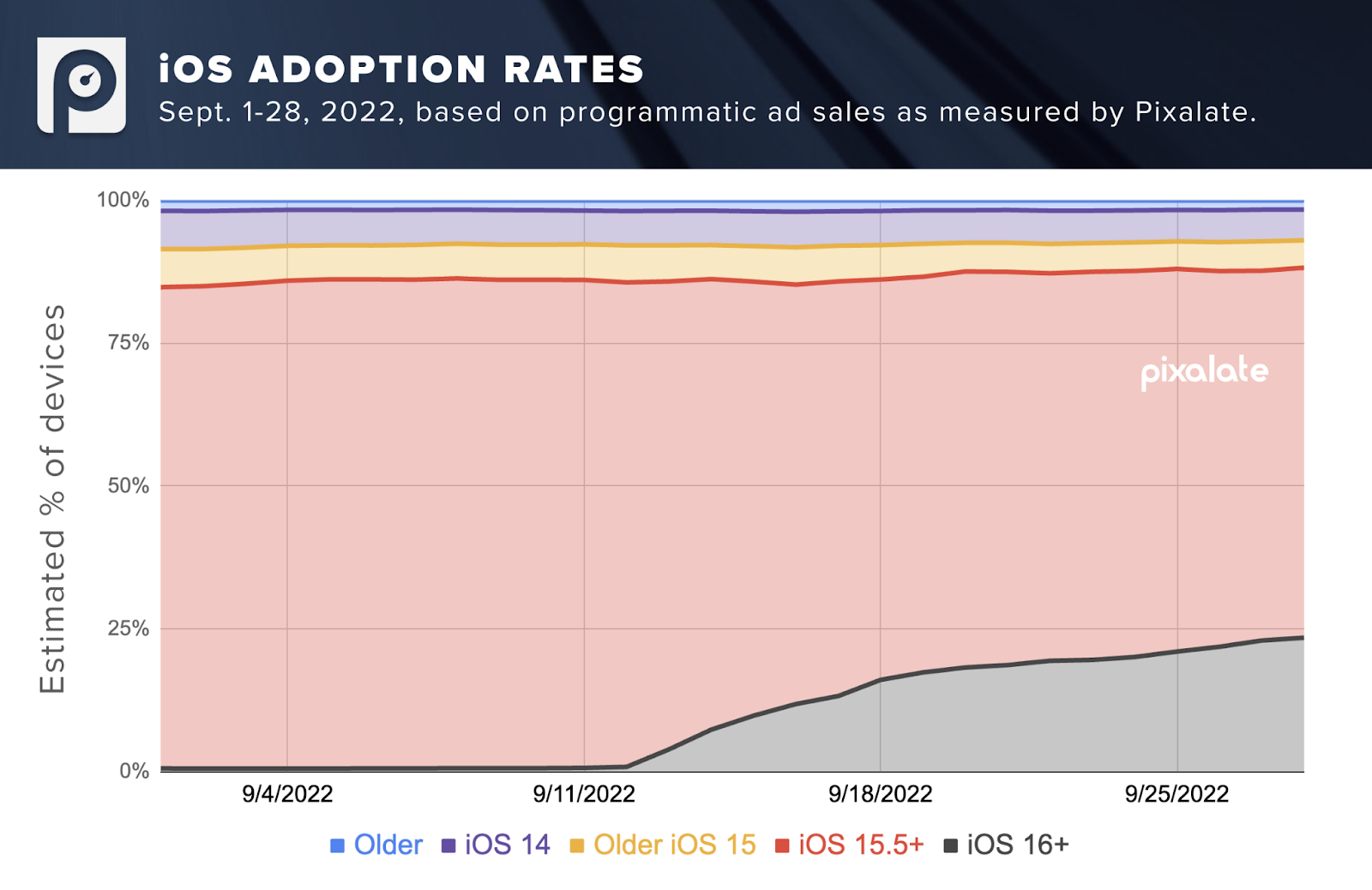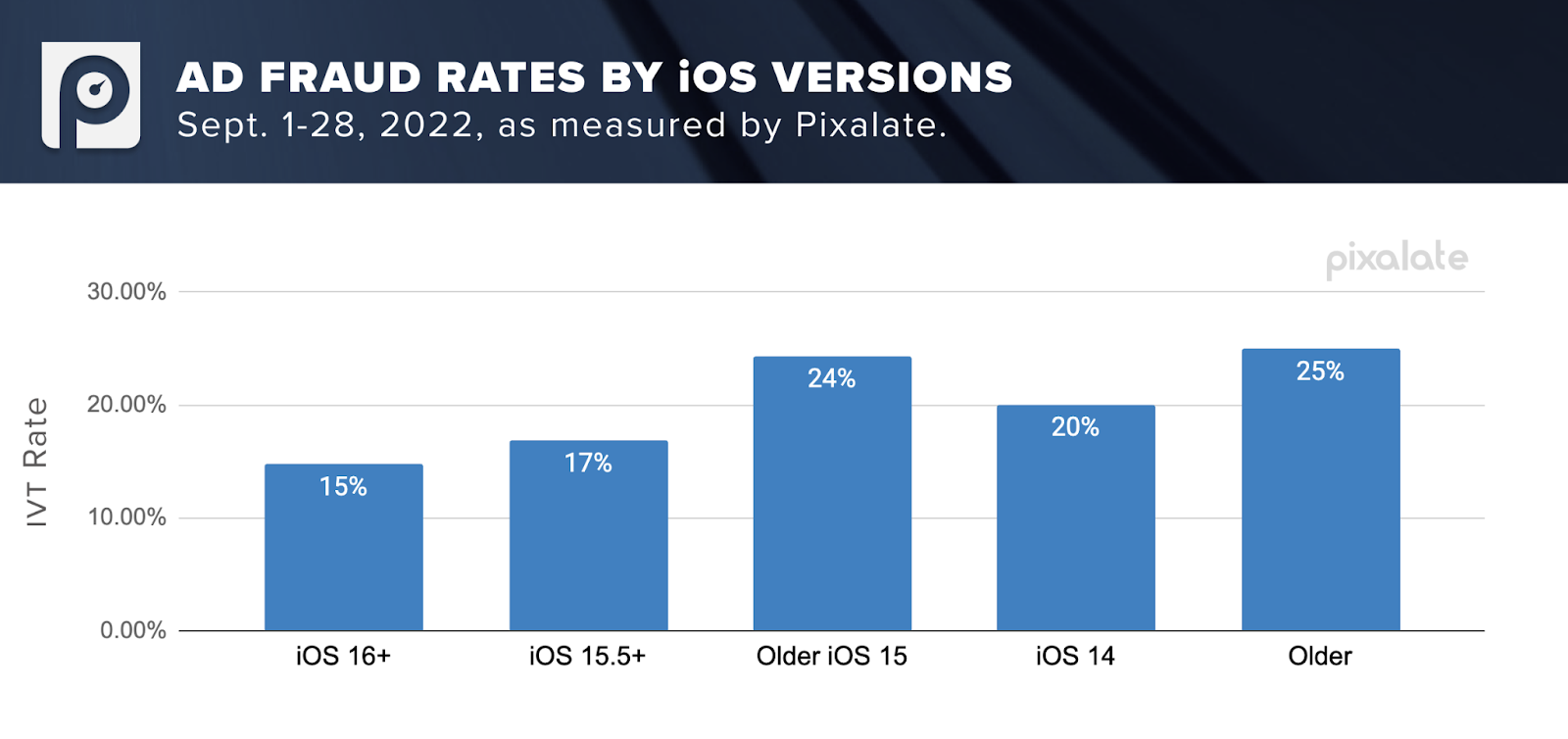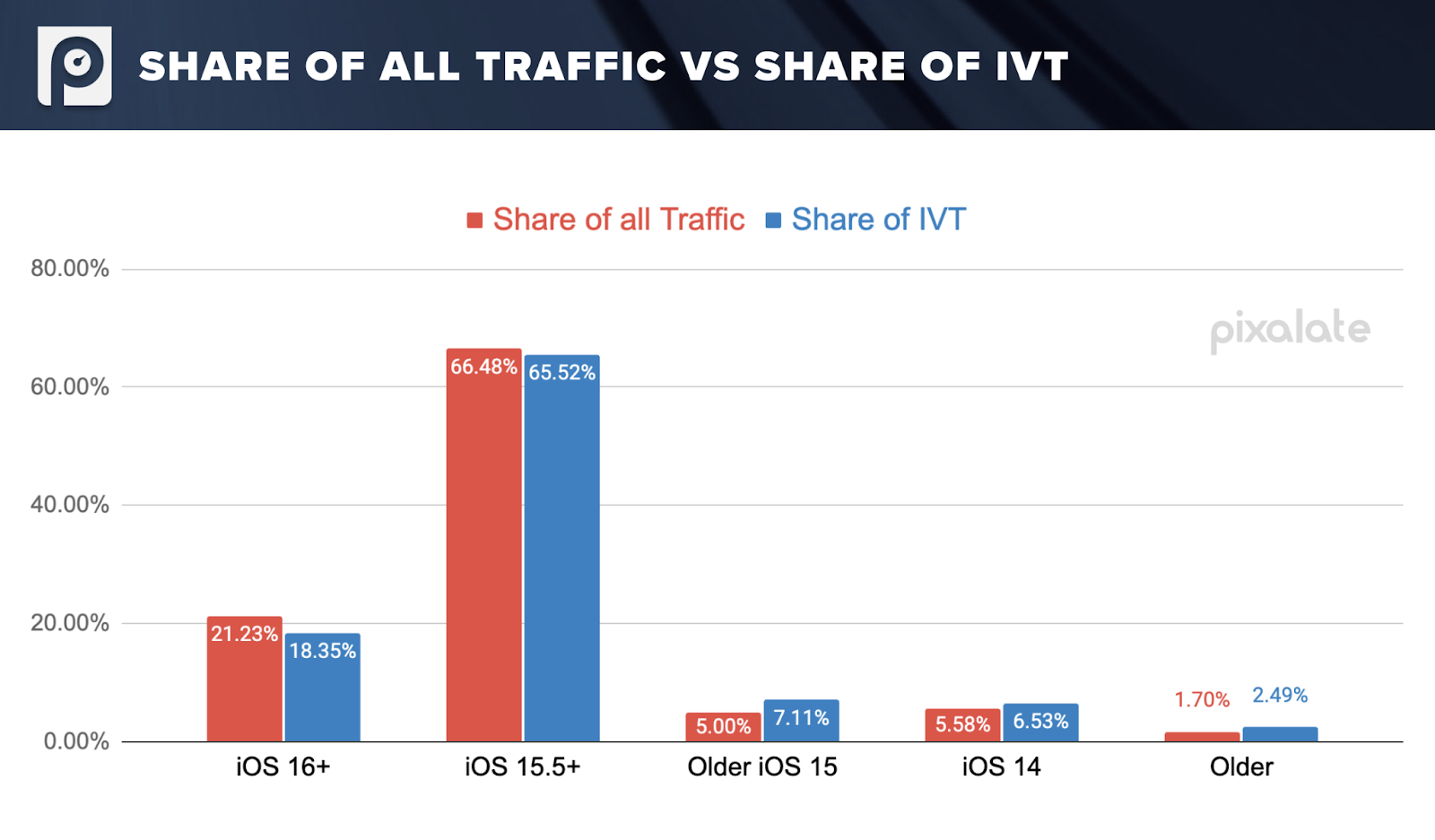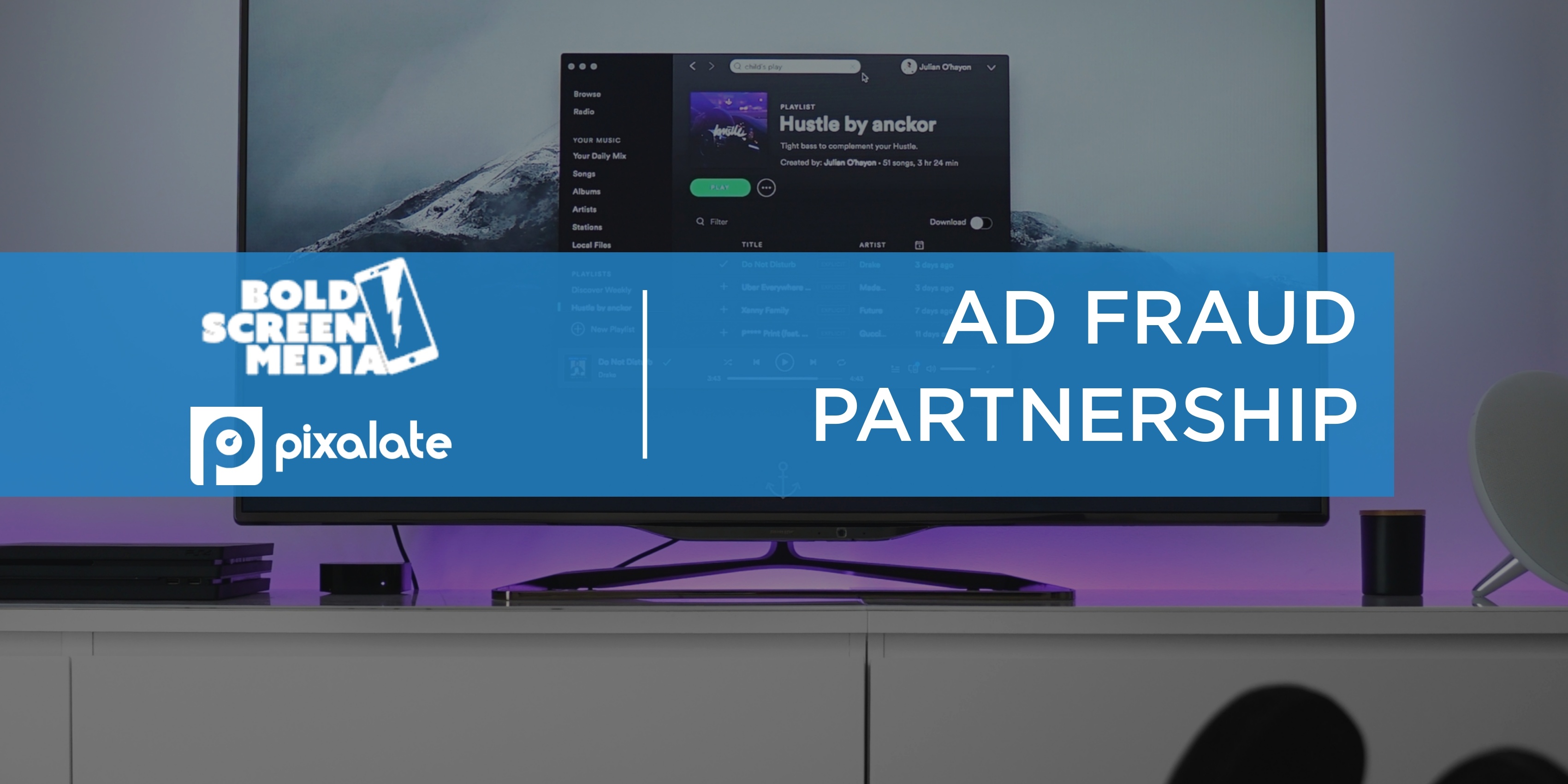Apple released iOS 16 on September 12th, and Pixalate examined consumer adoption rates of the new software three weeks in. More specifically, Pixalate examined programmatic ad sales on iOS devices from September 1 - 28, 2022 to estimate OS version adoption.
Key Takeaways:
- Based on Pixalate’s data, iOS 16 adoption is estimated to be 23% at the end of September, three weeks post launch.
- Users on newer versions of iOS (iOS 15.5+) were most likely to upgrade to iOS 16
- Ad fraud rates on devices updated to iOS 16 were 16.6% lower compared to older versions of iOS (14.8% vs. 17.8%).
(Note that the much anticipated – in the ad tech world, at least – SKAdNetworks 4.0 was not part of the iOS 16 release.)
Examining iOS 16 adoption
Looking at the overall traffic distribution, perhaps unsurprisingly, the graph below shows that users on newer versions of iOS were more likely to upgrade to iOS 16. Most of the upgrades appear to have come from iOS 15.5/15.6 devices.
About 1-in-4 iOS 15.5+ users upgraded to the new OS, according to our data, while only 1-in-9 iOS 14 users upgraded.

Pixalate also observed some traffic from iOS 15.7 (released at the same time as iOS 16) devices, but the number appears to be relatively low, indicating that most users opted to go with the major upgrade
Invalid Traffic (IVT) Trends
In the time period studied, Pixalate estimates that iOS 16 devices had an average ad fraud (IVT) rate of 14.8%, which was lower than all other versions (17.8% average).

According to our data, generally speaking, older OS versions also have a higher relative share of invalid traffic. For example, iOS 14 devices seem to generate 6.5% of the total IVT seen on iOS, even though they make up 5.5% of all iOS traffic.

Fighting ad fraud: How traffic patterns help IVT detection
Why are these findings relevant to the digital ad space? It’s an inside look at one of the data points we analyze for ad fraud detection.
We strive to ascertain what the expected traffic patterns should be because it helps us watch for discrepancies. If we see an unexpected spike in either iOS versions or IVT on various versions, it could be a sign of a new fraud attempt - and/or a new vulnerability that might be getting exploited - which prompts our fraud detection team to investigate further.
Additionally, insights on the OS versions across all devices is helpful for our clients in a variety of other (non-fraud related) use cases.
If you are interested in more insights like the above, across desktop, mobile and CTV devices, please reach out to us using this contact form.




-1.png)

